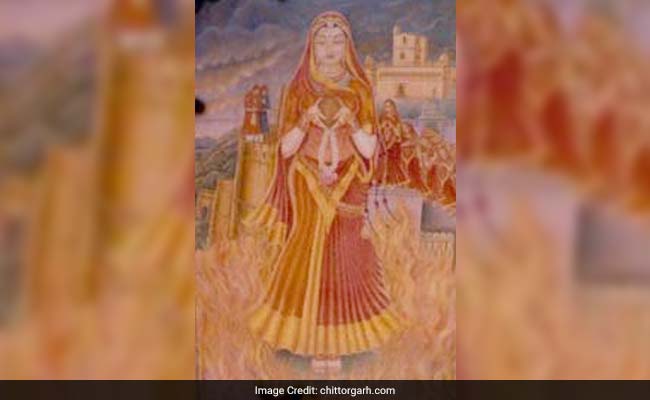
Rani Padmini, also known as Padmavati, is believed to be a 13th century Indian queen and is the subject of filmmaker Sanjay Leela Bhansali's upcoming film starring Deepika Padukone, Shahid Kapoor and Ranveer Singh. Accusing Mr Bhansali of twisting historical facts by romantically linking Queen Padmini with Sultan Alauddin Khilji, members of a fringe group Rajput Karni Sena attacked the filmmaker during a shoot at the historic Jaigarh Fort in Jaipur on Friday. After assurances from Mr Bhansali that there are no intimate scenes in the film, members of group have now demanded it be renamed and they must be allowed to review the film before release.
Here is a 10 point-guide to history behind Queen Padmini:
The earliest reference to Queen Padmini is an epic poem written by Malik Muhammad Jayasi in 1540 called 'Padmavat'.
According to popular belief, Rani Padmini was the queen of Rana Ratan Singh. In 1303, Allaudin Khilji attacked the kingdom of Chittorgarh which was under the rule of the Mewars. Rajput historians say Allaudin wanted to capture Rani Padmini.
Allaudin captured Ratan Singh and sent a message to Padmini that the king would be released if she agrees to go along with him.
Rani Padmini sent 700 troops to rescue Rana Ratan Singh and the troops were successful in rescuing the king but Khilji followed the troops and the king.
A fierce battle took place at the Chittorgarh fort and Rana was killed during the battle. Rani Padmini performed 'Jauhar' or self-immolation and sacrificed her life.
Some historians say Queen Padmini was only a mythical character imagined by the Sufi poet Malik Muhammad Jayasi in his allegorical poem written in Awadhi 30 years before Tulsidas began his Ramcharitmanas.
Sceptics say, there is not a shred of historical evidence that Padmini existed for real and the legend only taints the legacy of Alauddin Khilji, who defeated the Mongols and is praised as one of India's most able administrators.
The claims of the sceptics are bolstered also by a frequently referenced book on the subject - the Imperial Gazetteer of India - which says that "In the final verses of his work, the poet (Jayasi) explains that it is all an allegory."
What also adds to the confusion is several different versions of the story of the Queen Padmini besides Jayasi's epic and its multiple translations and adaptations.
From the 16th Century 'Gora Badal Padmini Chaupai', a Rajput adaption of the legend which presented it as a true tale, to the 19th Century colonial interpretations, and then several Bengali narratives - much of Queen Padmini's story remains open to interpretation.

